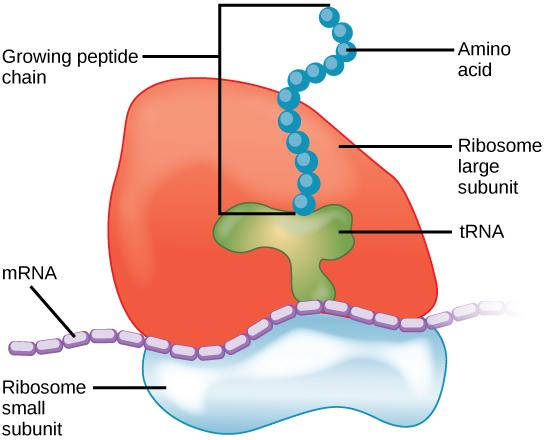
All are membrane-bound cell organelles except
A. Mitochondria
B. Spherosomes
C.Ribosomes
D. Lysosomes
Answer
585k+ views
Hint: Most of the cell organelles are enclosed by a semipermeable membrane, although there are some membrane-less organelles too within the cell.
The membrane-less cell organelle among the given options are macromolecules that contain both RNA and proteins and are extremely crucial in the process of translation.
Complete answer: Ribosomes are free-floating membrane-less cell organelles in the cytoplasm. They can be divided into two subunits which are different in prokaryotes and eukaryotes.
The lack of membrane is a strategic plan in order to facilitate the process of translation where a long chain of amino acids is produced.
During the process of translation, they are bound to the ER membrane but during the rest period, they can float freely in the cytoplasm which helps them to pick up translational RNA which are essentially released from the nucleus. It also enables them to grab free amino acids and later produce long protein chains hence they have dual adaptation.
Being a non-membrane bound organelle, they are more solid in nature and are not fluid-filled along with ribosomes, cell organelles like the lysosomes, peroxisomes, Golgi bodies, and vacuoles.

So, the correct answer is option C. Ribosomes.
Note: During the extensive process of translation, the two ribosomal subunits join together just like a sandwich on the messenger RNA strand and attract the tRNA molecules. A long chain of amino acids called polypeptide chains (after undergoing post-translational processing) emerges as the ribosome decodes the mRNA sequence.
The membrane-less cell organelle among the given options are macromolecules that contain both RNA and proteins and are extremely crucial in the process of translation.
Complete answer: Ribosomes are free-floating membrane-less cell organelles in the cytoplasm. They can be divided into two subunits which are different in prokaryotes and eukaryotes.
The lack of membrane is a strategic plan in order to facilitate the process of translation where a long chain of amino acids is produced.
During the process of translation, they are bound to the ER membrane but during the rest period, they can float freely in the cytoplasm which helps them to pick up translational RNA which are essentially released from the nucleus. It also enables them to grab free amino acids and later produce long protein chains hence they have dual adaptation.
Being a non-membrane bound organelle, they are more solid in nature and are not fluid-filled along with ribosomes, cell organelles like the lysosomes, peroxisomes, Golgi bodies, and vacuoles.

So, the correct answer is option C. Ribosomes.
Note: During the extensive process of translation, the two ribosomal subunits join together just like a sandwich on the messenger RNA strand and attract the tRNA molecules. A long chain of amino acids called polypeptide chains (after undergoing post-translational processing) emerges as the ribosome decodes the mRNA sequence.
Recently Updated Pages
The number of solutions in x in 02pi for which sqrt class 12 maths CBSE

Write any two methods of preparation of phenol Give class 12 chemistry CBSE

Differentiate between action potential and resting class 12 biology CBSE

Two plane mirrors arranged at right angles to each class 12 physics CBSE

Which of the following molecules is are chiral A I class 12 chemistry CBSE

Name different types of neurons and give one function class 12 biology CBSE

Trending doubts
Which are the Top 10 Largest Countries of the World?

What are the major means of transport Explain each class 12 social science CBSE

Draw a labelled sketch of the human eye class 12 physics CBSE

Differentiate between insitu conservation and exsitu class 12 biology CBSE

The computer jargonwwww stands for Aworld wide web class 12 physics CBSE

State the principle of an ac generator and explain class 12 physics CBSE




